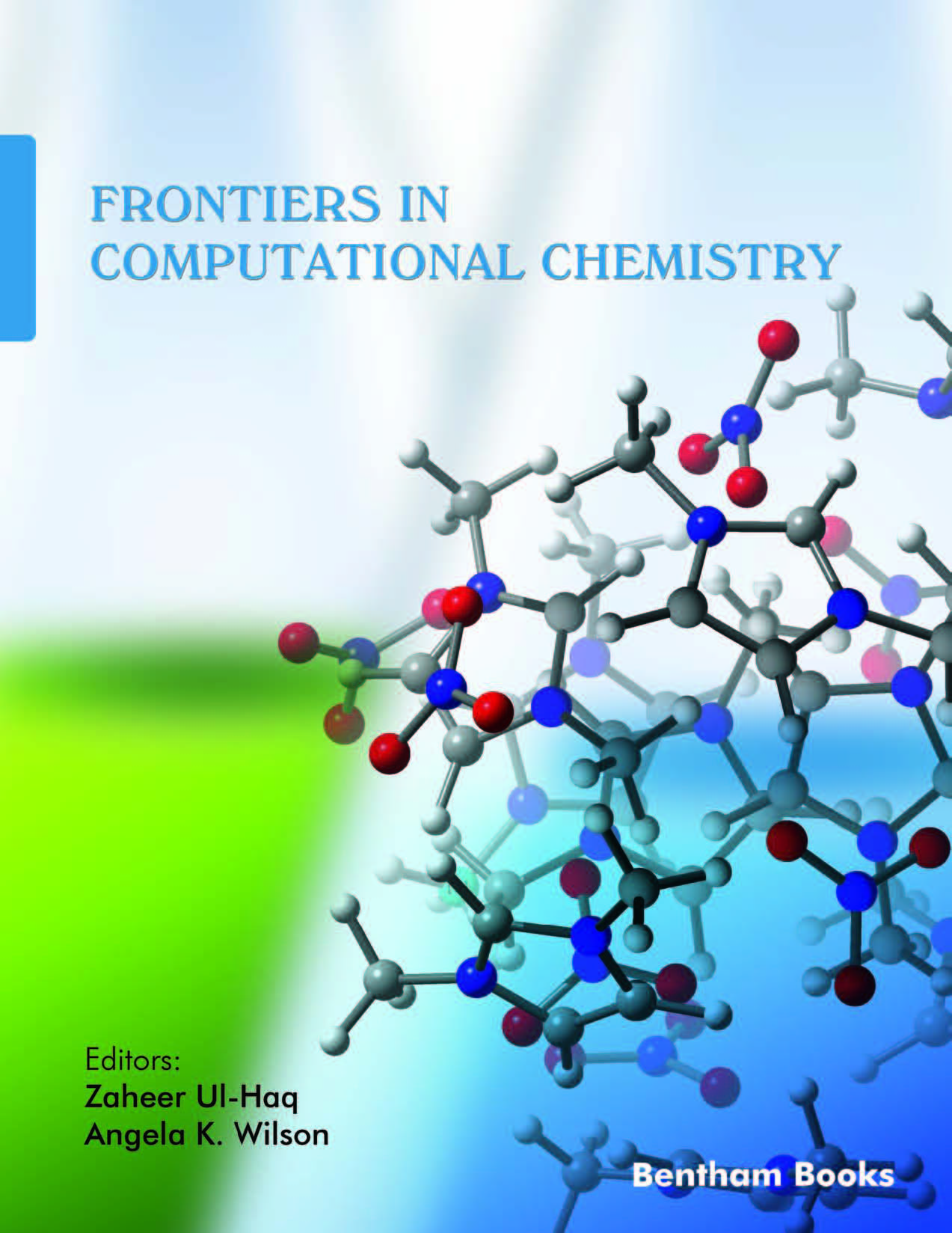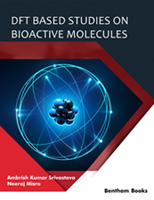Computational chemistry is an important partner to experiment in understanding a very broad range of chemical problems, providing insight not possible or not easily possible to obtain via experiment, and enabling a greater understanding of experiment when it is possible. The span of computational chemistry approaches in terms of both method and applicability is significant – with methods including electronic structure calculations (e.g., density functional theory (DFT)) and free energy relationships (e.g., QSAR, QSPR), with applications spanning from in-depth description of the spectroscopic properties of the smallest of atoms and molecules to the design of new molecules and materials in medicine.
The focus of Frontiers in Computational Chemistry is on the application of computational chemistry approaches to biological and organic processes.
In this fifth volume, the six chapters address a diversity of topics including:
Chapter 1 “Recent Advances and Role of Computational Chemistry in Drug Designing and Development on Viral Diseases” Amit Lochab, Rakhi Thareja, Reena Saxena, Sangeeta D. Gadre.
This chapter outlines a number of approaches that are commonly used in drug design, including structural-based and ligand-based computational strategies, and the role of quantum mechanics and molecular mechanics. A brief overview of how these methods have been utilized in the development of drugs against viral disease, addressing ebola, zika, hepatitis C, and coronavirus is provided.
Chapter 2 “Molecular Modeling Applied to Design of Cysteine Protease Inhibitors – A Powerful Tool for the Identification of Hit Compounds Against Neglected Tropical Diseases” Igor José dos Santos Nascimento, Thiago Mendonça de Aquino, Paulo Fernando da Silva Santos-Júnior, João Xavier de Araújo-Júnior, and Edeildo Ferreira da Silva-Júnior.
The impact and importance of computational chemistry in drug development is significant. However, the drug discovery process is truly a fine art, with numerous methods and strategies available. In this chapter, the authors consider a number of different molecular modeling techniques, and demonstrate their use in the development of cysteine protease inhibitors. Cysteine proteases are known to play important roles from growth and development of plants to bone development in humans and animals. In this study, the design of cysteine protease inhibitors against a number of tropical diseases is considered.
Chapter 3 “Application of Systems Biology Methods in Understanding the Molecular Mechanism of Signalling Pathways in the Eukaryotic System”, Aditya Rao S.J. and M. Paramesha.
Signalling pathways are critical cascades of reactions that can impact metabolic functions from cell division to cell death. Understanding the underlying mechanisms of signalling pathways is critical, as this can provide insight about how abnormalities can impact the activation or deactivation of signalling events. The authors provide an overview of computational routes that can be used to understand signalling path mechanisms, including systems biology and data mining. Wnt signalling pathways are the focus of this chapter due to their role in growth to cancer.
Chapter 4 “Implementation of the Molecular Electrostatic Potential over GPUs: Large Systems as Main Target” J. César Cruz, Ponciano García-Gutierrez, Rafael A. Zubillaga, Rubicelia Vargas and Jorge Garza.
Electrostatic interactions are vital to non-covalent interactions which are prevalent in biological systems. A very useful means to gain insight about these electrostatic interactions is via the molecular electrostatic potential (MEP). MEP is generated using quantum mechanical methods, which represents a significant computational challenge for all but the smallest of molecules. This chapter provides two routes to extend the utility of MEP to larger molecules, utilizing graphical processing units (GPUs) to generate the MEP. The theoretical details are provided, as are a number of useful examples of the application of the methods.
Chapter 5 “Molecular Electron Density Theory: A New Theoretical Outlook on Organic Chemistry” Luis R. Domingo, Nivedita Acharjee.
This chapter highlights molecular electron density theory (MEDT), which was introduced by the co-author, Luis Domingo, in 2015. MEDT is based upon the philosophy that changes in electron density rather than molecular orbital interactions drive molecular reactions. The authors discuss a broad range of quantum mechanical principles and approaches that are a part of MEDT and facilitate the understanding of molecular interactions and reactions. The authors provide a long list of reactions, and conclusions that can be drawn from MEDT about these reactions.
Chapter 6 “Frontier Molecular Orbital Approach to the Cycloaddition Reactions”, Anjandeep Kaur.
Cycloaddition reactions, more specifically, 1,3-dipolar cycloaddition reactions, play a critical role from drug discovery to materials design. Controlling the regioselectivity, enantioselectivity, and diastereoselectivity of these reactions is a major challenge. In this chapter, the reactivity and selectivity of a wide variety of 1,3-dipolar cycloaddition reactions is overviewed. A Frontier Molecular Orbital (FMO) approach is considered.
We hope that the readers will find these reviews to be valuable, and that they may inspire trigger further research in the field. We are grateful for the timely efforts made by the editorial personnel, especially Ms. Mariam Mehdi (Assistant Manager Publications), Mr. Obaid Sadiq (Manager Bentham Books), and Mr. Mahmood Alam (Director Publications) at Bentham Science Publishers.
Zaheer Ul-Haq
Dr. Panjwani Center for Molecular Medicine and Drug Research
International Center for Chemical and Biological Sciences
University of Karachi
Karachi
Pakistan
&
Angela K. Wilson
Department of Chemistry
Michigan State University
East Lansing, MI
USA




